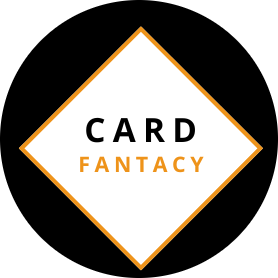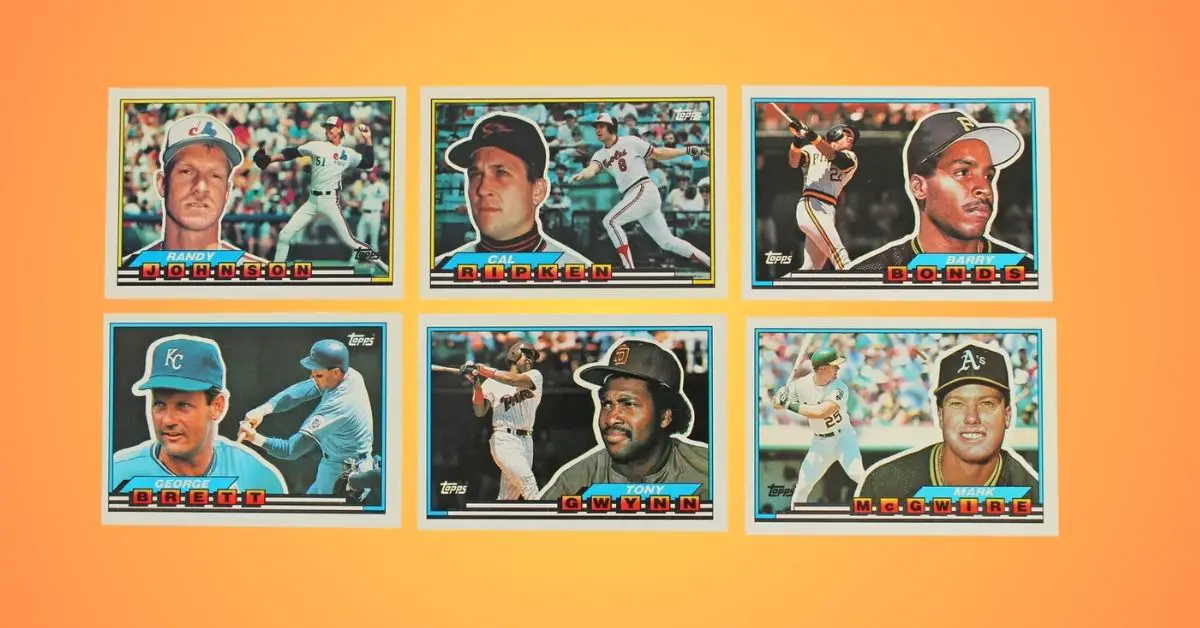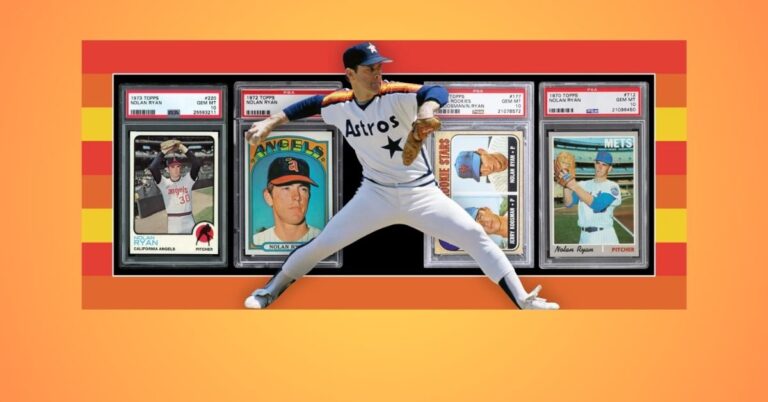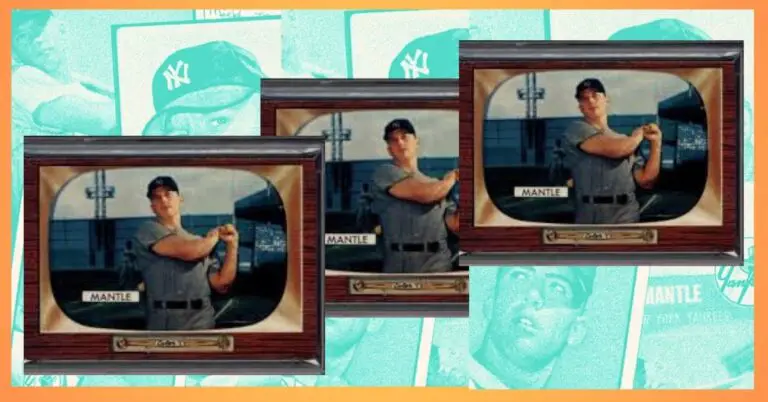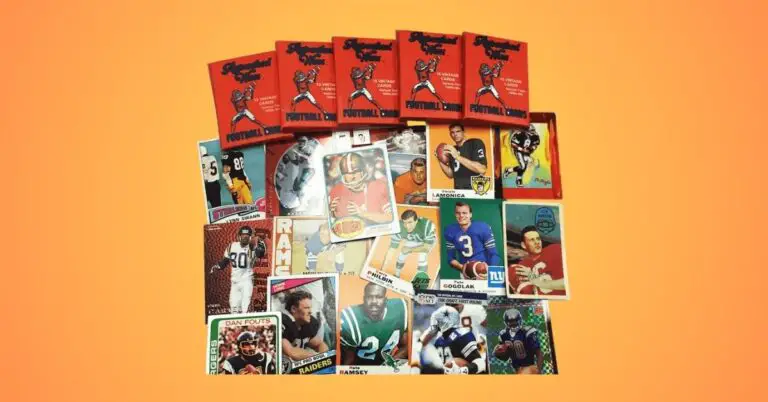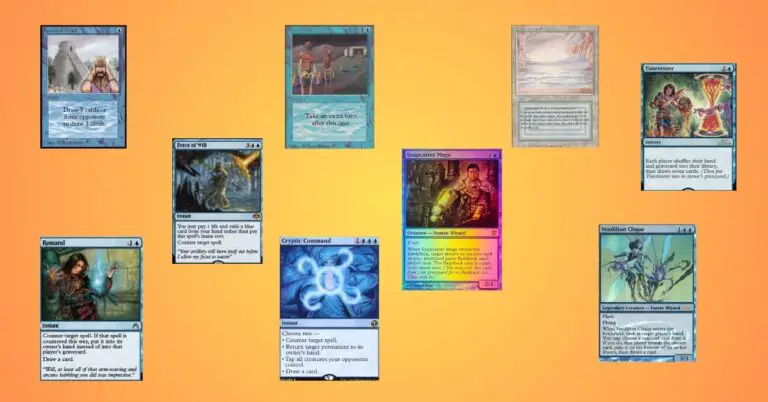Most Valuable 1989 Topps Baseball Cards | TOP 27
Among the iconic collections, the 1989 Topps Baseball Cards stand out not just for their bright colors and player portraits but also for their lasting value in the collectors’ market. With 792 cards in total, this set captured the essence of an era where baseball reignited America’s pastime spirit and young fans eagerly sought to complete their collections.
Let’s join us to explore which 1989 baseball cards are worth money today and what makes them so special in the eyes of both seasoned collectors and newcomers alike!
Most Valuable 1989 Topps Baseball Cards
The 1989 Topps Baseball Cards with its iconic design featuring bold colors and a fresh layout, this series represented a shift towards a more modern aesthetic that would reshape future releases.
- 1989 Topps Traded #41T Ken Griffey Jr.
- 1989 Topps #530 Nolan Ryan
- 1989 Topps #700 Don Mattingly
- 1989 Topps #250 Cal Ripken Jr.
- 1989 Topps #100 Mike Schmidt
- 1989 Topps #540 Bo Jackson
- 1989 Topps Traded #110T Deion Sanders
- 1989 Topps #647 Randy Johnson Rookie Card
- 1989 Topps #650 Kirby Puckett
- 1989 Topps #233 Gregg Jefferies
- 1989 Topps #210 Dale Murphy
- 1989 Topps #230 Ozzie Smith
- 1989 Topps #380 Rickey Henderson
- 1989 Topps #397 Don Mattingly All-Star
- 1989 Topps #465 Mark Grace
- 1989 Topps #570 Tony Gwynn
- 1989 Topps #620 Barry Bonds
- 1989 Topps #240 Greg Maddux
- 1989 Topps #300 Darryl Strawberry
- 1989 Topps #343 Gary Sheffield Future Star
- 1989 Topps #382 John Smoltz Rookie Card
- 1989 Topps Traded #500 Jose Canseco
- 1989 Topps Traded #660 Will Clark
- 1989 Topps Traded #200 George Brett
- 1989 Topps Traded #360 Ryne Sandberg
- 1989 Topps Traded #505 Pete Rose
- 1989 Topps #49 Craig Biggio Rookie Card
1989 Topps Traded #41T Ken Griffey Jr.
| Value | $275 |
| Grade | PSA 10 |
It is a symbol of the skyrocketing value of sports memorabilia, especially when it features legends like Griffey. This card is relatively easy to find in its basic version, its pristine condition—particularly graded PSA 10—turns it into an asset worth $30 or more.
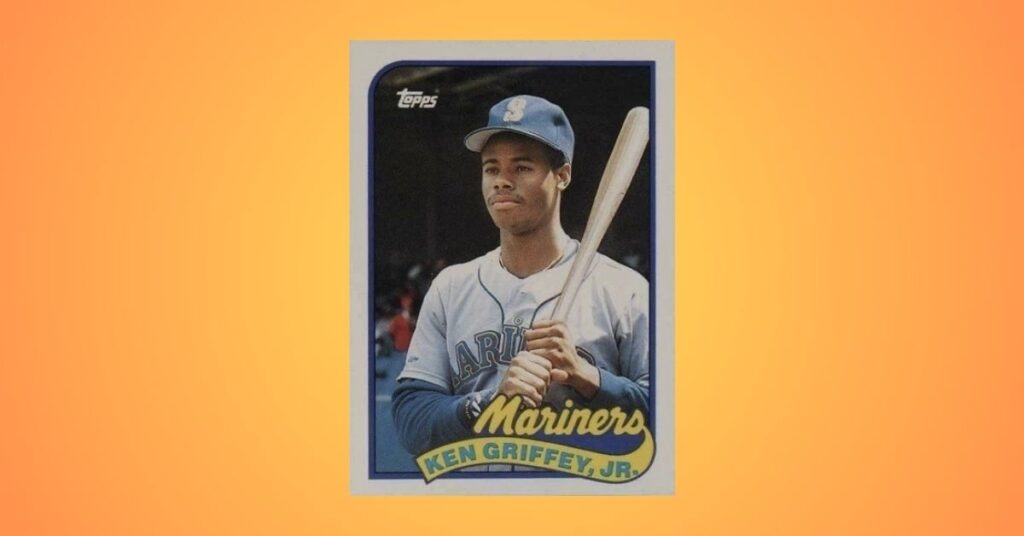
The lesser-known rarity of this variant adds to the thrill of the hunt—a PSA 10 Tiffany edition can command an impressive price tag upwards of $500. As interest surges for iconic cards from the late ’80s,
1989 Topps #530 Nolan Ryan
| Value | $100 |
| Grade | PSA 10 |
Nolan Ryan’s incredible journey to becoming the only member of the 5,000 strikeout club is a testament to both his remarkable talent and enduring resilience. On August 22, 1989, at the age of 42, Ryan was poised on the brink of history as he faced off against the Oakland Athletics.
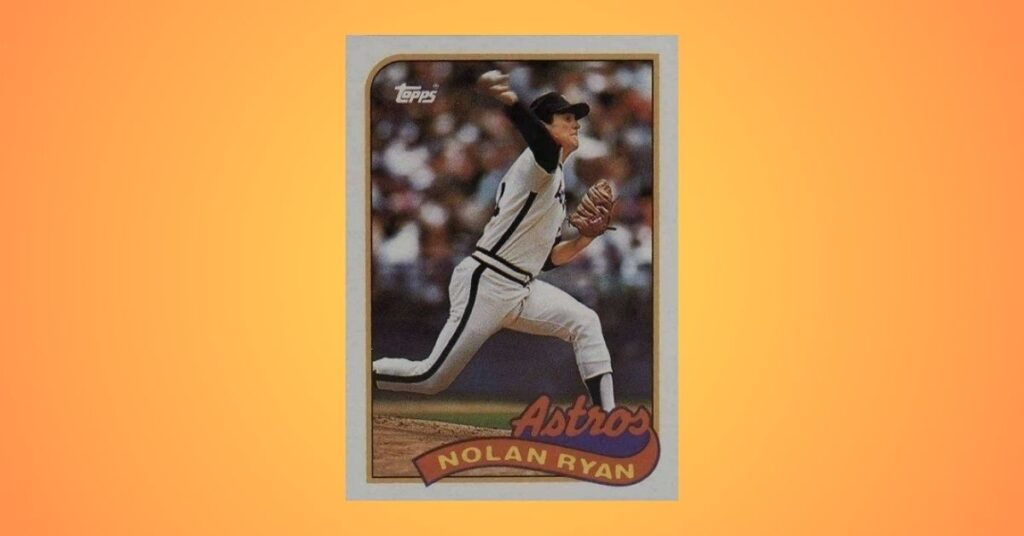
In a thrilling duel that highlighted his unmatched skill, Ryan entered with an impressive record and had garnered nearly as many strikes as innings pitched. The thrill of anticipation surrounded him as he closed in on that puzzling milestone.
1989 Topps #700 Don Mattingly
| Value | $75 |
| Grade | PSA 10 |
As the 1989 MLB season drew to a close, Don Mattingly’s performance solidified his status as one of baseball’s premier first basemen and a force at the plate. His resilience was remarkable, despite grappling with two herniated discs in his back.
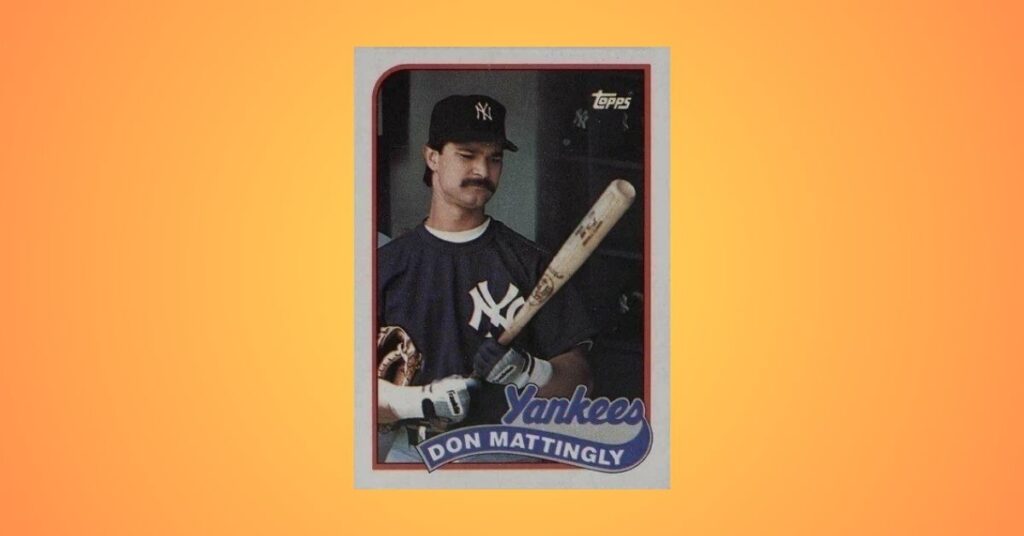
Mattingly played 158 games that year, an impressive feat that spoke volumes about his dedication and durability. The statistics don’t lie—hitting .303 with 23 home runs and exceeding 100 RBIs once again showcased why he was enshrined in many fans’ hearts as a surefire Hall of Famer.
Mattingly’s card number 700 has emerged as one of the most valuable within the set. It captures a piece of baseball nostalgia that resonates across generations, making these cards highly sought after by both seasoned collectors and new enthusiasts alike.
1989 Topps #250 Cal Ripken Jr.
| Value | $70 |
| Grade | PSA 10 |
Cal Ripken Jr. showcased a remarkable turnaround in his defensive capabilities, Ripken had previously struggled with consistency, tallying over 20 errors a few seasons prior. He stood out in ’89 by committing just eight errors and leading Major League Baseball with an impressive total of 815 chances.
This defensive prowess contributed enormously to his second-best fielding percentage of 990 among shortstops, proving that even in a year where the Orioles fell just two games shy of the AL East crown, Ripken’s influence was palpable on both sides of the field.
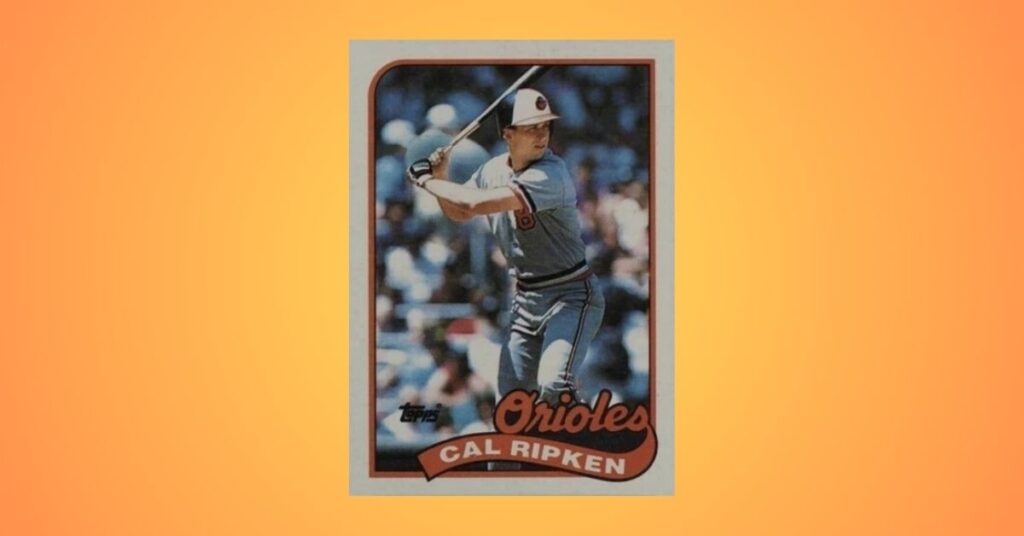
His exceptional performance extended beyond mere statistics; it also highlighted his leadership qualities while working closely with Baltimore’s pitching staff. Despite facing tough competition and experiencing career lows in other hitting metrics like a 317 on-base percentage and 718 OPS.
This season remained pivotal for Ripken’s legacy. The combination of stellar defense and determination not only earned him a seventh consecutive All-Star nod and fifth Silver Slugger award.
1989 Topps #100 Mike Schmidt
| Value | $65 |
| Grade | PSA 10 |
Mike Schmidt faced a season filled with uncertainty as he marked a return to the diamond after his 1988 rotator cuff surgery. The legendary Phillies third baseman signed a one-year deal, choosing to finish his storied career where it began. Unfortunately, just 42 games into the season, Schmidt’s struggles were palpable as he committed a costly error that resulted in four unearned runs
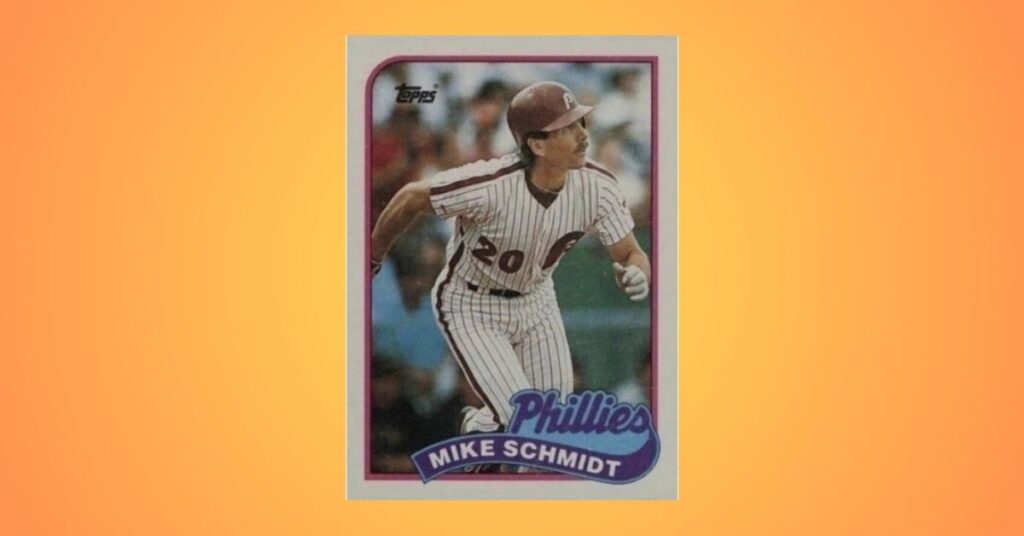
After a heartfelt retirement speech on May 29th that encapsulated decades of passion for baseball, he walked away from the game while still holding remarkable records—most notably being one of only two active players at retirement to have hit over 500 home runs and accumulated nearly 1,600 RBIs.
1989 Topps #540 Bo Jackson
| Value | $65 |
| Grade | PSA 10 |
During the 1989 baseball season transformed him into a cultural icon, with an impressive performance that included leading the American League in All-Star voting and clinching MVP honors for the game, Jackson showcased his multi-sport prowess by excelling not just on the baseball diamond but also maintaining visibility on football fields.
His thrilling style of play captured the imaginations of fans across America and turned him into a popular topic among media outlets, further solidifying his status as a crossover superstar.
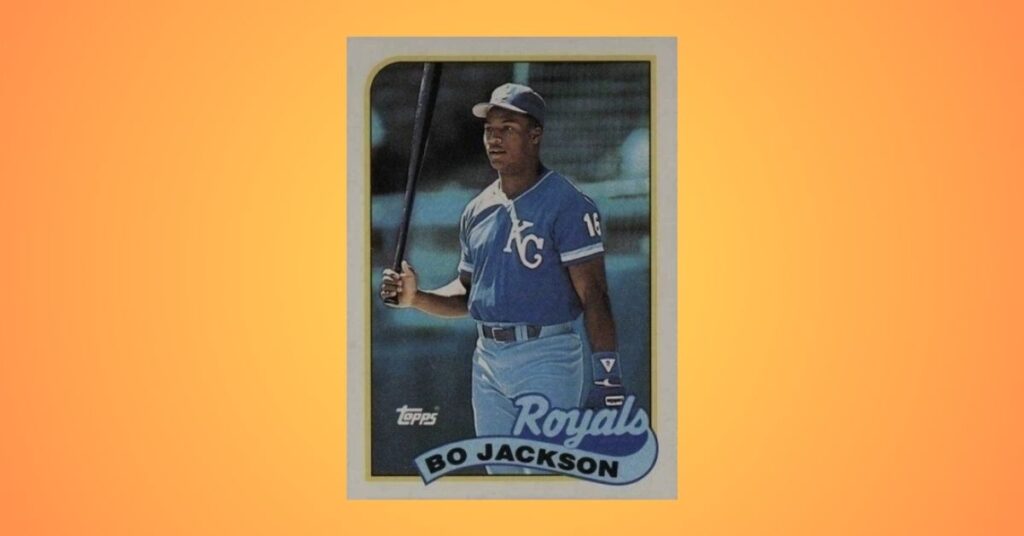
Despite his injuries and high strikeout rate—leading MLB with 172—Jackson’s remarkable achievements in 1989 cannot be overlooked. He finished the season with career highs: 32 home runs, 105 RBIs, and notable contributions like six triples while playing in 135 games.
Each statistic tells a story of resilience amidst challenges that would have sidelined many athletes. The enduring appeal of Jackson culminated not only in fanfare but also propelled cards from this era to becoming some of the most valuable collectibles today.
1989 Topps Traded #110T Deion Sanders
| Value | $65 |
| Grade | PSA 10 |
At Florida State, Sanders was a rare tri-sport talent renowned for his abilities in baseball, football, and track and field—all of which set the stage for an illustrious career. When he was selected sixth overall by the Atlanta Falcons in the NFL Draft after being taken as a 30th-round pick by the New York Yankees in Major League Baseball, it solidified his status as one of the most versatile athletes of his time.
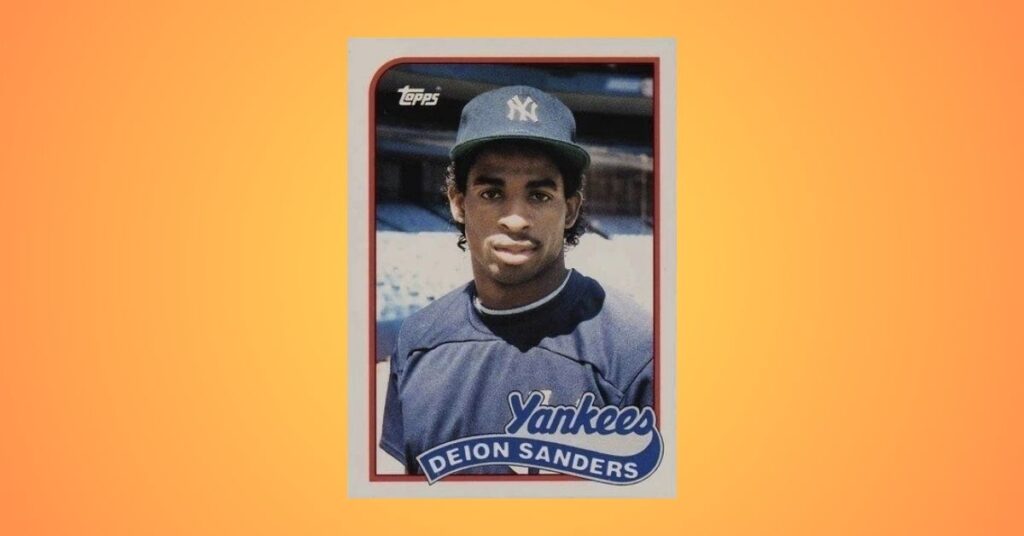
As “Prime Time,” Deion made waves not just on the gridiron but also on the diamond. In September 1989, during a pivotal transition period filled with contract negotiations with the Falcons, he marked his entry into professional baseball spectacularly by crushing a home run against the Seattle Mariners shortly after signing with Atlanta.
This dual-sport legacy is highlighted further by his achievement as the only player in MLB and NFL history to both score a touchdown and hit for a home run—a testament to his extraordinary athleticism that continues to resonate within collector circles today.
1989 Topps #647 Randy Johnson Rookie Card
| Value | $60 |
| Grade | PSA 10 |
This card stands as a bittersweet reminder of the Montreal Expos’ miss on one of baseball’s most iconic pitchers. Despite being a half-game ahead in the NL East division race on July 31st, the Expos opted for experienced starter Mark Langston in a trade with the Seattle Mariners rather than trusting their young talent.
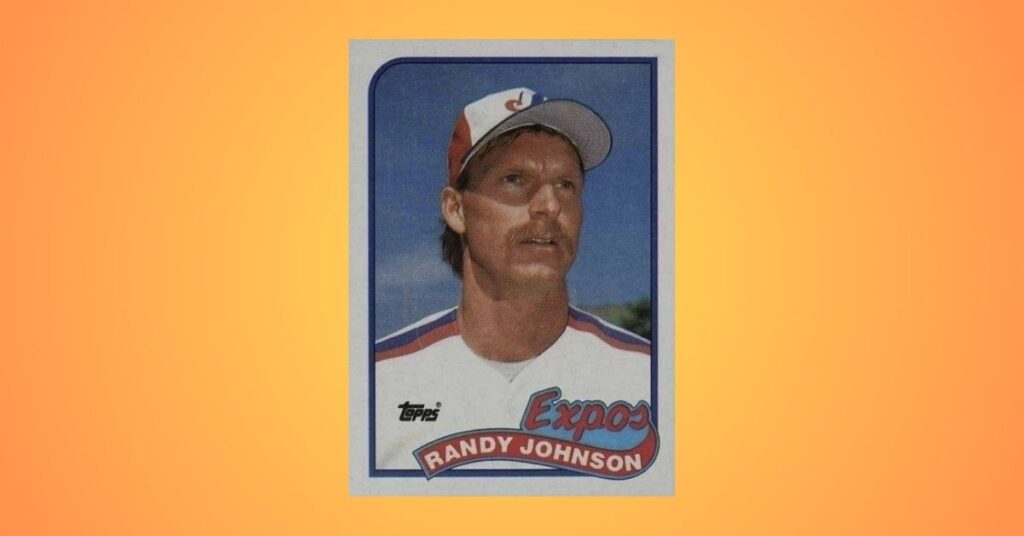
This move not only shifted their focus away from nurturing future stars like Johnson but also showcased a tendency to prioritize immediate gains over long-term potential. While Langston’s presence was immediately felt on the mound, he ultimately couldn’t steer the team towards postseason success, finishing with an uninspiring 500 record.
Had management held onto Johnson, who had yet to fully develop his Hall of Fame-caliber skills, he could have transformed into an anchor for the pitching rotation instead of jumping ship to become a legendary figure with the Arizona Diamondbacks. Collectors today recognize that one man’s oversight is another’s treasure;
1989 Topps #650 Kirby Puckett
| Value | $60 |
| Grade | PSA 10 |
In 1989, the season may be remembered as a juxtaposition of power and precision. Despite hitting just eight home runs—a stark contrast to his career-best 31 in 1986—the Minnesota Twins center fielder showcased an extraordinary batting ability that transcended the long ball.
With a stellar 339 average, Puckett clinched his first and only batting title on the final day of the season, highlighting his consistency as one of baseball’s premier hitters. His knack for getting on base helped him lead the majors with 215 hits and set personal highs with 45 doubles and a 379 on-base percentage.
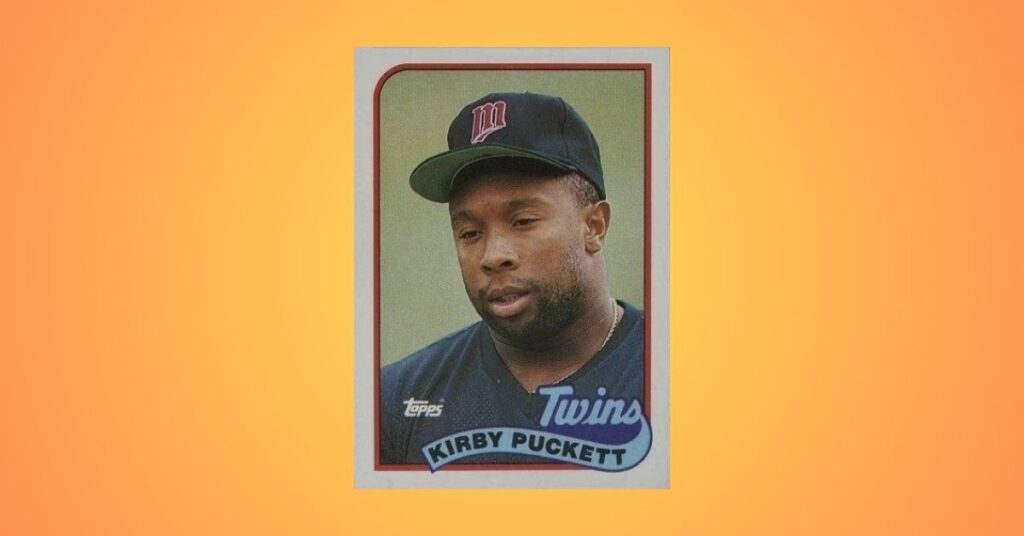
Some may focus solely on Puckett’s decline in home runs during this particular year. It is vital to recognize his remarkable defensive prowess that earned him a fourth consecutive Gold Glove award. Consistently performing at an elite level in center field—recording over 400 putouts for the fifth straight year—he complemented his batting finesse with superior defensive skills.
1989 Topps #233 Gregg Jefferies
| Value | $55 |
| Grade | PSA 10 |
The 1989 season was a rollercoaster for Mets fans, After showcasing a beefy 961 OPS in a mere 29 games in 1988, expectations soared for the budding star. Jefferies’ on-field demeanor—marked by bat slams and an air of entitlement—alienated many fans. His line of 258/314/392 with modest power numbers showcased flashes of brilliance amidst frustrating inconsistency.
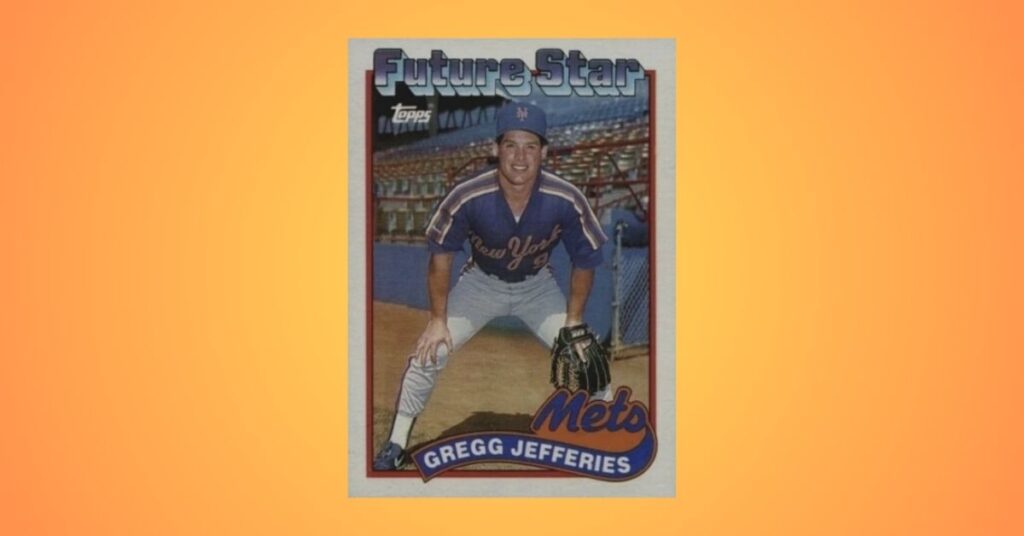
The culmination of this tension was most notably captured during Game 162 when Jefferies charged at Phillies’ pitcher Roger McDowell after an emotionally charged finale. The incident underscored both Jefferies’ fiery spirit and his inability to channel it positively within New York’s pressure cooker environment.
He would remain a player to watch in subsequent seasons, this episode crystallized how far he had fallen short of the lofty expectations placed upon him—a painful reminder for Mets fans grappling with unfulfilled dreams amid fierce competition from teams like the eventual NL East champion Chicago Cubs.
1989 Topps #210 Dale Murphy
| Value | $50 |
| Grade | PSA 10 |
The two-time NL MVP, once a powerful hitter and fan favorite, found himself entangled in what seemed like an endless cycle of disappointment. In 1989, as he slashed just 228/306/361 with only 20 home runs, it was clear that both Murphy and the team were experiencing a downturn. Frustrated by the organization’s lack of direction and supportive moves to bolster their roster, fans could feel his anguish; he was trapped in an era where losses piled up almost as quickly as they once celebrated victories.
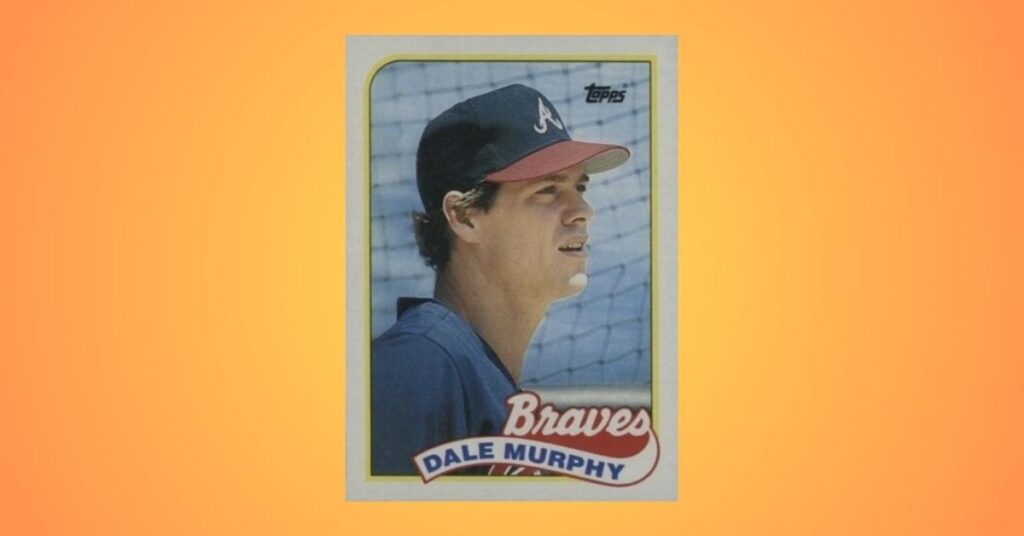
As trade talks simmered in the wake of his declining performance—Murphy finishing below average at age 33—the inevitable seemed looming. While many might remember this period through cards such as the iconic 1987 Topps baseball cards featuring him in better days.
1989 Topps #230 Ozzie Smith
| Value | $50 |
| Grade | PSA 10 |
This card was a masterclass in shortstop play, his batting statistics were commendable, it was his fielding that set him apart as the ultimate wizard of the diamond.
He garnished headlines for his stellar defensive play, his offensive contribution was equally noteworthy. Slashing 273/335/361 with 30 doubles and 29 stolen bases, Smith proved that a shortstop could do more than just field; he could ignite an offense and set the stage for scoring opportunities. His ability to score 82 runs demonstrated how pivotal he was to the St. Louis Cardinals’ lineup.
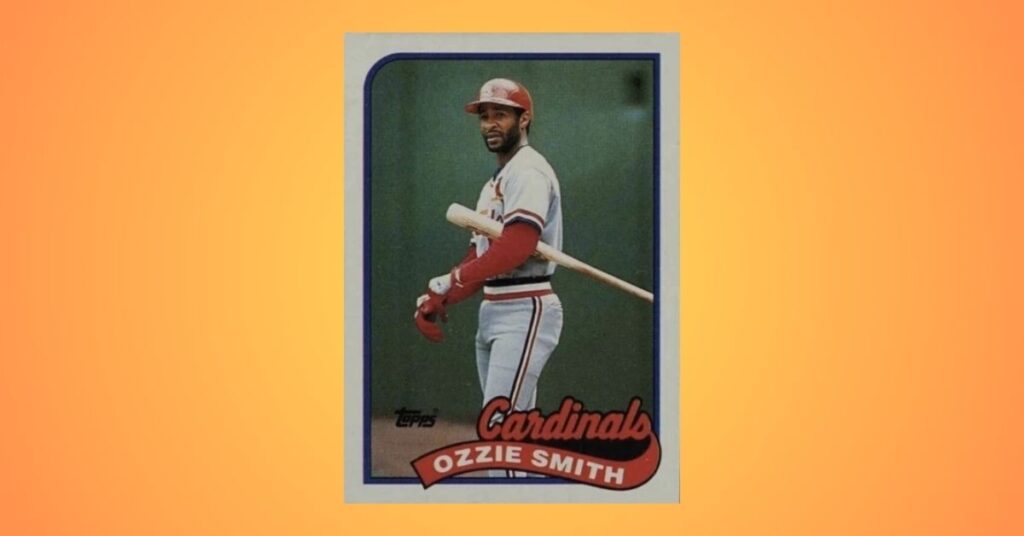
Despite tallying 17 errors that season—a number far below his usual standards—Smith’s defensive metrics were unimpeachable. Posting a career-high defensive WAR of 4.8 and leading MLB with an impressive Total Zone Fielding Runs Above Average of 32 captured the true narrative: it wasn’t just about avoiding mistakes; it was about making spectacular plays when they mattered most.
1989 Topps #380 Rickey Henderson
| Value | $50 |
| Grade | PSA 10 |
When Rickey Henderson returned to the Oakland A’s in June 1989, it was more than just a reunion; it was a strategic move that would prove pivotal in their pursuit of another World Series title. His experience and unparalleled speed reinvigorated the team’s dynamics, creating a formidable top of the lineup alongside the Bash Brothers.
Mark McGwire and Jose Canseco. Henderson’s ability to get on base and disrupt opposing pitchers with his stolen bases added an unpredictable element to the A’s offense that redefined what it meant to apply pressure on defenses, leaving them scrambling.
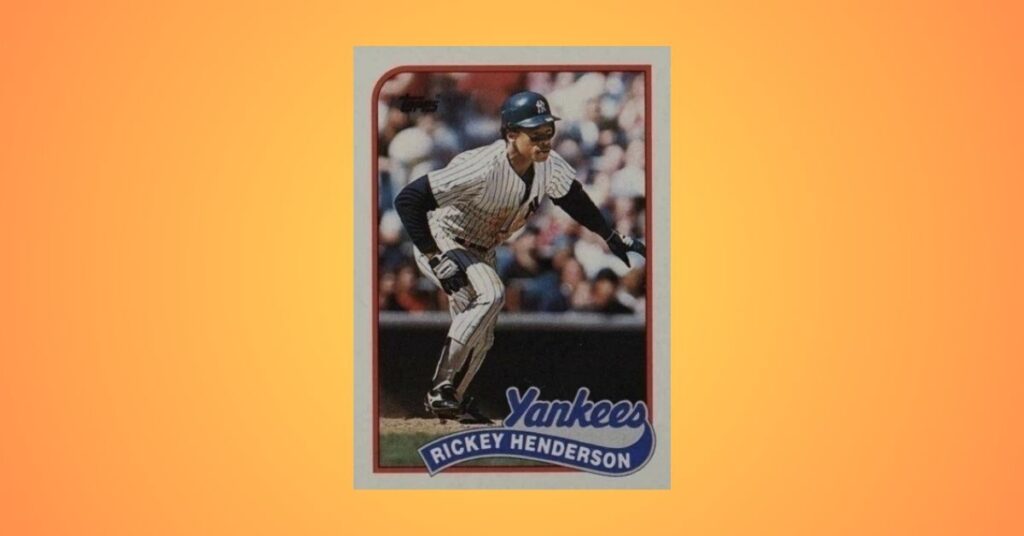
Henderson’s postseason performance exemplified his immense value not just as a body on the field but as a game-changer under pressure. With numbers like 441 batting average and an astonishing 12 runs scored in nine World Series games.
He showcased his elite skill set at its peak just when it mattered most. This wasn’t merely about adding a star player; it was about seamlessly integrating someone who could elevate those around him and enhance team chemistry.
1989 Topps #397 Don Mattingly All-Star
| Value | $50 |
| Grade | PSA 10 |
An era where the New York Yankees were in the midst of a rebuilding phase. After a challenging stint in the mid-1980s, Mattingly roared back with a powerhouse season that included 23 home runs and an impressive 113 RBIs.
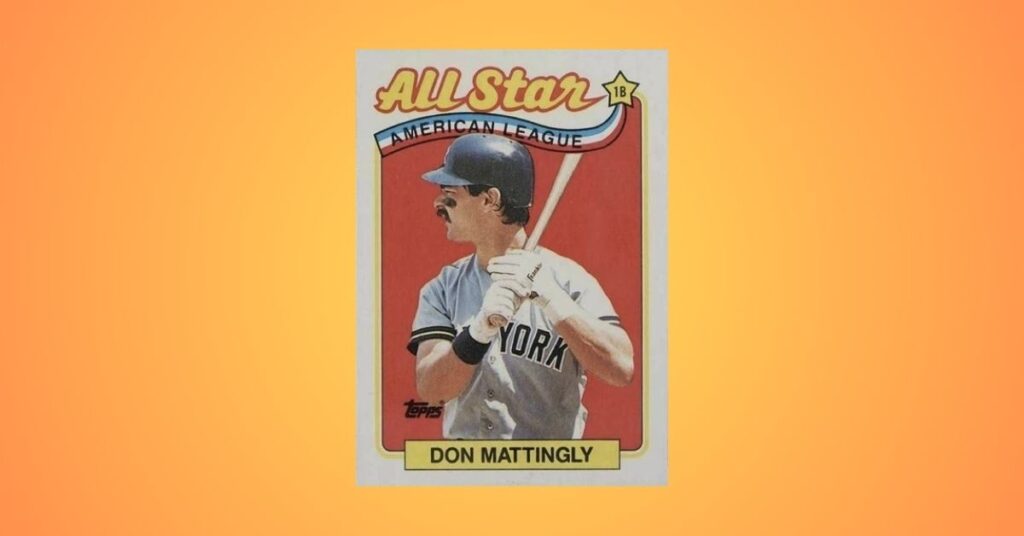
The Yankees found themselves mired in frustration, unable to secure a postseason berth since their World Series loss in ‘81, which only added to Mattingly’s weighty legacy as an all-time great without playoff success.
When he signed that lucrative five-year contract extension—a move unprecedented at the time—it highlighted both his immense talent and loyalty to a team seeking redemption.
1989 Topps #465 Mark Grace
| Value | $50 |
| Grade | PSA 10 |
The Chicago Cubs as they made a surprising run in the National League East. His impressive slash line of 314/405/457 showcased a maturity at the plate that belied his youth, with an astute ability to work pitchers and get on base.
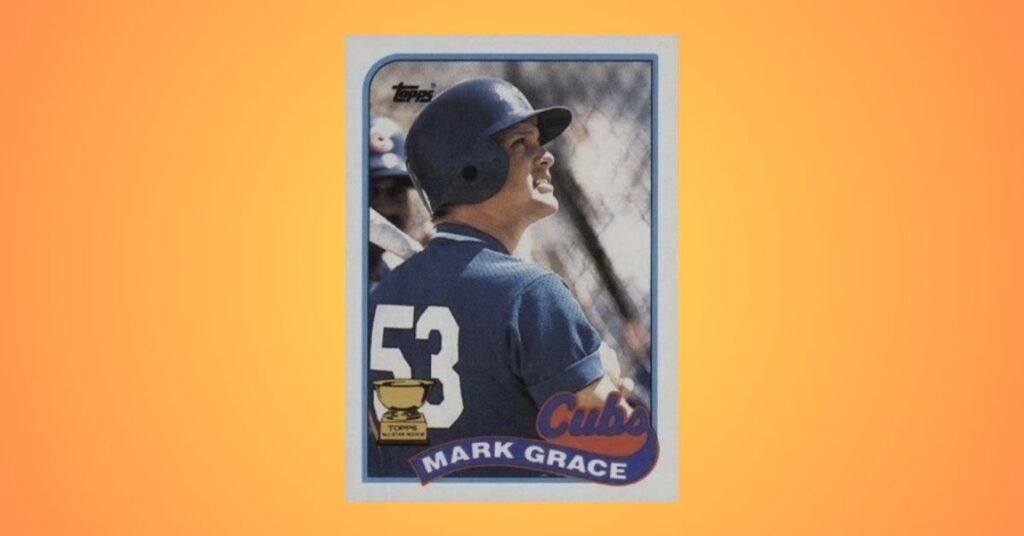
Grace’s defining moment came during the NLCS against the San Francisco Giants, where he proved unstoppable, racking up 11 hits in just five games—a performance that started carving his legacy into Cubs history.
Grace demonstrated significant defensive improvements at first base, sharply reducing his errors from 17 to just 6 while moving closer to league-average defense. This dual-threat capability elevated him among peers and contributed substantially to team success.
1989 Topps #570 Tony Gwynn
| Value | $50 |
| Grade | PSA 10 |
A defining moment in baseball history, marking the beginning of a new hitting revolution that would influence future generations. With an uncanny ability to analyze and adapt, Gwynn’s obsessive study of videotape set him apart from his contemporaries. While players often relied on raw talent.
Gwynn took a meticulous approach; he famously packed VCRs for road trips, immersing himself in the intricacies of his at-bats and studying opposing pitchers’ rhythms—an innovative strategy that many modern hitters now employ.
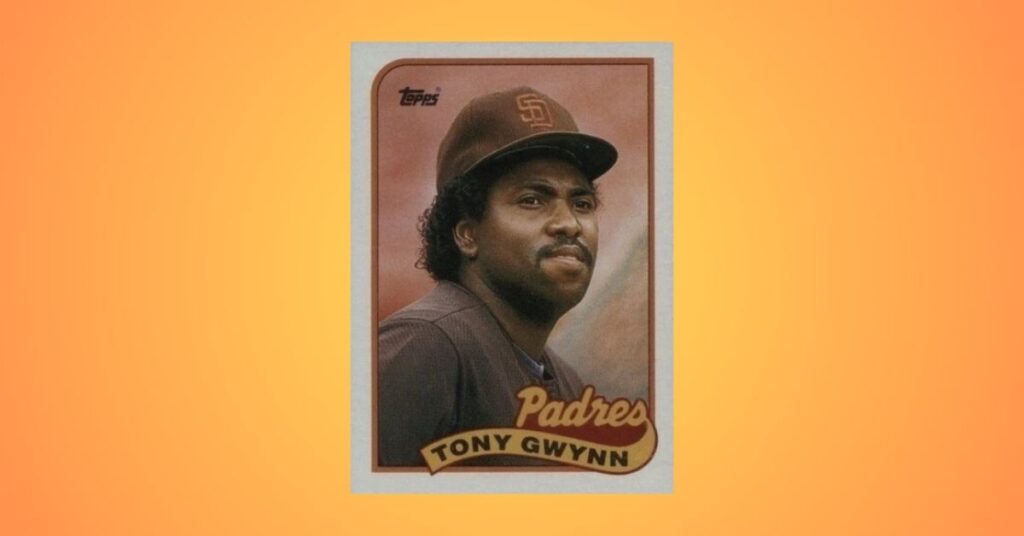
Despite the frustrations of playing for a team that fell short in the standings, Gwynn’s determination shone through as he racked up 203 hits and clinched his fourth National League batting title with an impressive 336 average.
His remarkable ability to dink and dunk pitches showcased not just skill but an exceptional understanding of the game’s dynamics—masterfully guiding balls to all areas of the field while helping keep his Padres competitive until late in the season
1989 Topps #620 Barry Bonds
| Value | $50 |
| Grade | PSA 10 |
He was no longer just a player for the Pittsburgh Pirates; he teetered on the brink of superstardom. He still faced a complicated relationship with fans. Despite showing flashes of brilliance—evident in his 32 stolen bases and respectable on-base percentage—his 248 batting average left much to be desired.
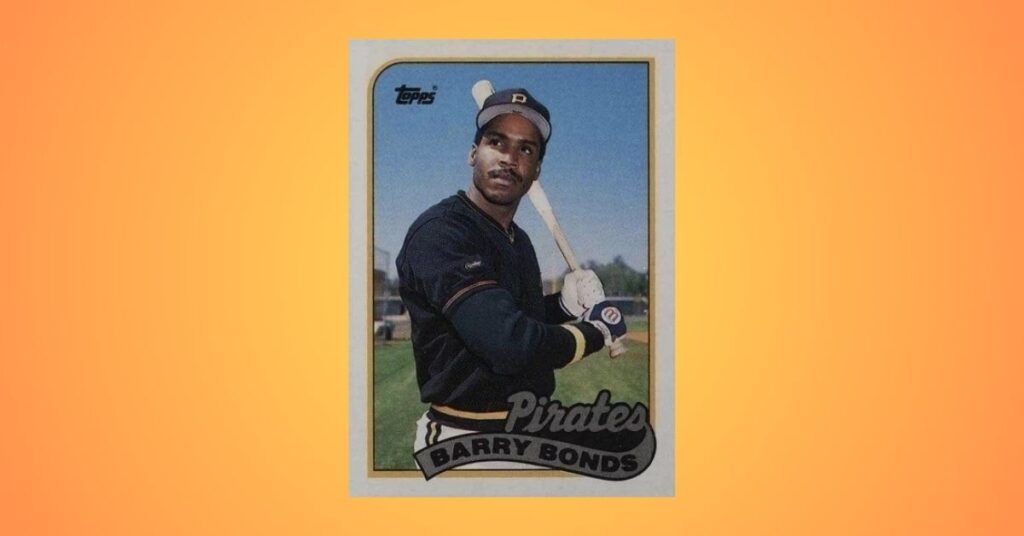
This disconnect fueled a wave of scrutiny from local columnists and die-hard Pirates fans, who often questioned his commitment and passion for the game. He was still navigating rough waters with fans who wanted more warmth than cold indifference.
1989 Topps #240 Greg Maddux
| Value | $45 |
| Grade | PSA 10 |
In Maddux’s early career, just as he transformed from a talented rookie into “The Professor,” renowned for his strategic pitching prowess.
In April, finishing with an unsightly 8.4 ERA for the month, Maddux rebounded spectacularly. He concluded the season with impressive statistics—19 wins and a WHIP of just 1.276—and solidified his status as a rising star by claiming third place in the NL Cy Young voting at merely 23 years old.
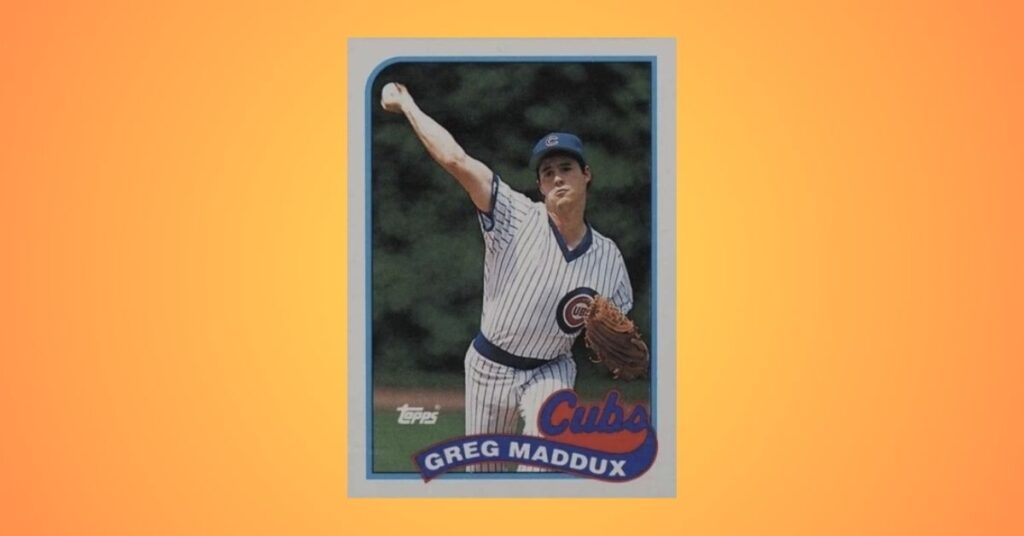
As history shows, even future legends face their trials; during the NLCS against San Francisco, he was unable to deliver when it mattered most—surrendering significant runs in crucial moments against an aggressive Giants lineup led by Will Clark.
1989 Topps #300 Darryl Strawberry
| Value | $45 |
| Grade | PSA 10 |
His undeniable talent, which previously positioned him as a future superstar — exemplified by his runner-up finish for MVP in 1988 — Strawberry’s struggles on the field mirrored the chaos off it. The Mets entered that year brimming with promise but quickly became emblematic of excess and discord.
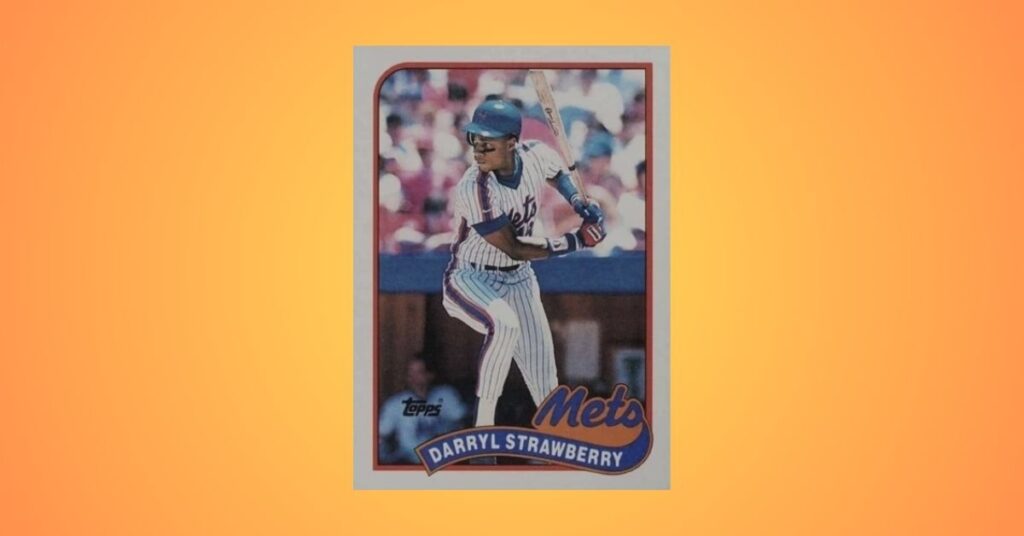
This manifested not just in Strawberry’s disappointing statistics, but also through well-documented discord within the club itself. His career worsts, including a 225 batting average and an OPS of 779, were juxtaposed against the backdrop of diva attitudes and substance abuse issues that plagued several teammates.
1989 Topps #343 Gary Sheffield Future Star
| Value | $45 |
| Grade | PSA 10 |
The hottest prospect in Major League Baseball, Sheffield arrived at camp with the Milwaukee Brewers carrying the weight of lofty hopes. His flashy performance in 1988 established him as a front-runner for AL Rookie of the Year.
Despite his undeniable talent—reflected both in his stunning swing reminiscent of future All-Stars and his poised presence on the field—he struggled through a significant slump from April to July, leading to costly defensive lapses that culminated in twelve errors.
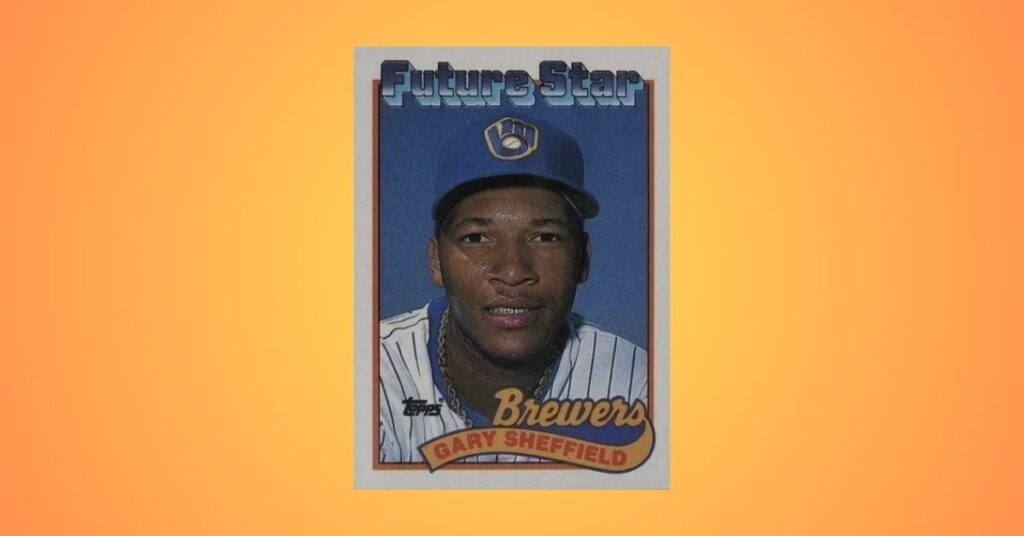
The challenges peaked when Sheffield was sent back to Triple-A Denver mid-season after an undetected broken bone was discovered in his foot. This startling revelation underscored not only the physical toll but also raised questions about how organizations handle player injuries and development.
The subsequent return to Milwaukee was tainted by skepticism; despite putting up numbers that would be respectable for many rookies—such as five home runs and 32 RBIs over 95 games
1989 Topps #382 John Smoltz Rookie Card
| Value | $45 |
| Grade | PSA 10 |
During Smoltz’s first three seasons, the Atlanta Braves were mired in mediocrity, averaging over 100 losses per year. Yet, amidst this turmoil, the young righty emerged as a beacon of hope in his debut season. With an impressive record of 11-6 and an extraordinary 2.10 ERA during the first half of the season, he showcased talent that hinted at greatness to come, earning him a spot on the All-Star team despite playing for a last-place club.
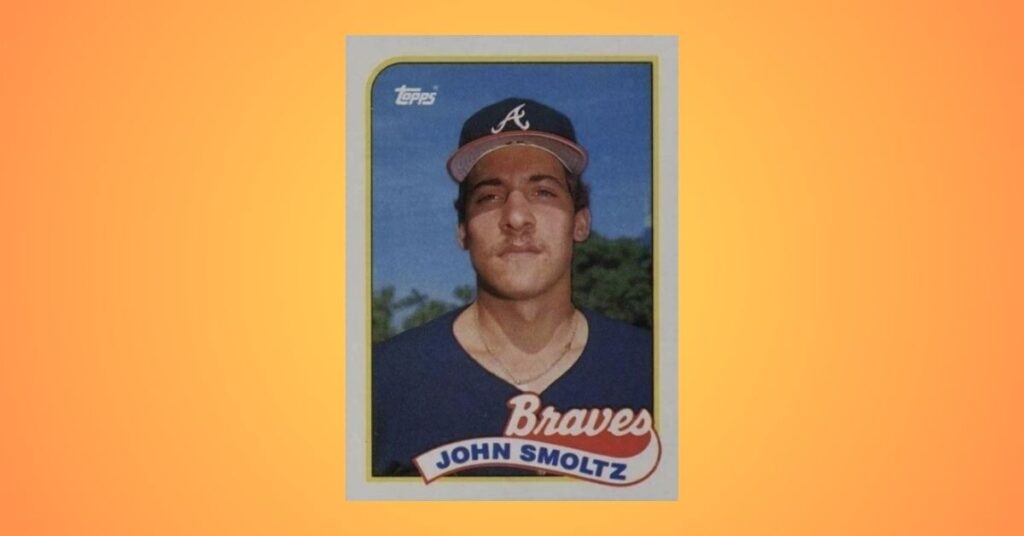
His second half brought forth challenges as fatigue set in and opposing hitters adjusted to his pitching style. The stark contrast between his stellar start and subpar finish—recording just one win against five losses—reflects both the difficulties faced by young players on struggling teams and those often forgotten narratives that surround valuable cards like Smoltz’s rookie offering.
1989 Topps Traded #500 Jose Canseco
| Value | $45 |
| Grade | PSA 10 |
This season was a whirlwind for Jose Canseco, Amidst injury struggles and off-field controversies, Canseco transformed into a complex figure; the AL MVP award seemed juxtaposed against a backdrop marked by turmoil—the stress fracture that began his season and culminated in legal troubles like his arrest at the University of California Medical Center. Against this stormy narrative, Canseco somehow managed to produce respectable numbers: hitting .269 with 17 home runs and 57 RBIs over just 65 games.
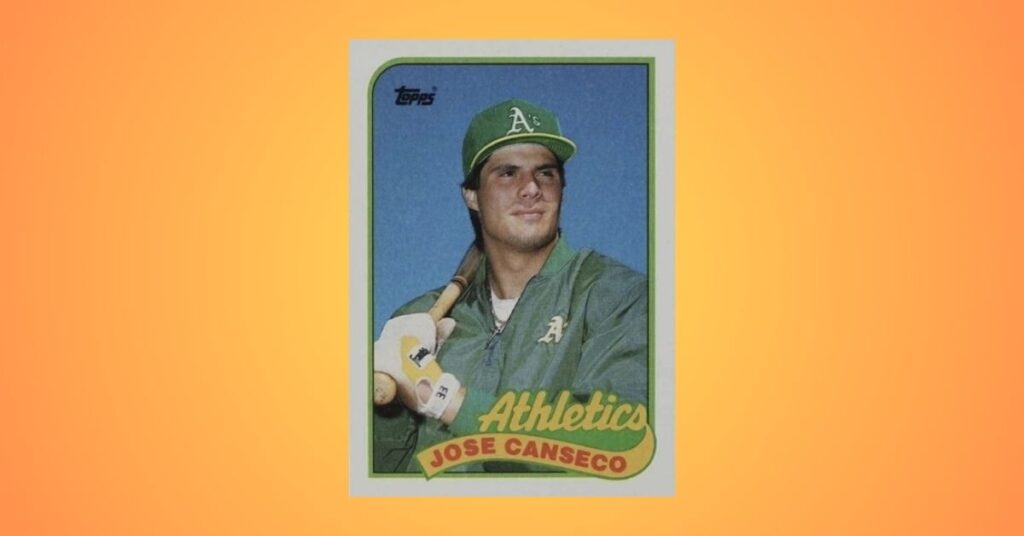
His bizarre journey saw him voted into the AL All-Star Game without recording an official plate appearance that year—a testament to both fan adoration and his undeniable raw talent. The Oakland Athletics’ path to the World Series overshadowed Canseco’s antics during crucial moments when media attention could have lingered longer on him than on their championship run.
1989 Topps Traded #660 Will Clark
| Value | $45 |
| Grade | PSA 10 |
Will Clark and Kevin Mitchell not only lead the charge on the field but also showcased an intense camaraderie that translated into competitiveness. Their rivalry was palpable, as they pushed each other to new heights in performance while engaging in lighthearted contests off the diamond. Will Clark encapsulates his pivotal role as he boasted jaw-dropping stats—hitting 333 with 23 home runs and an impressive array of doubles and triples.
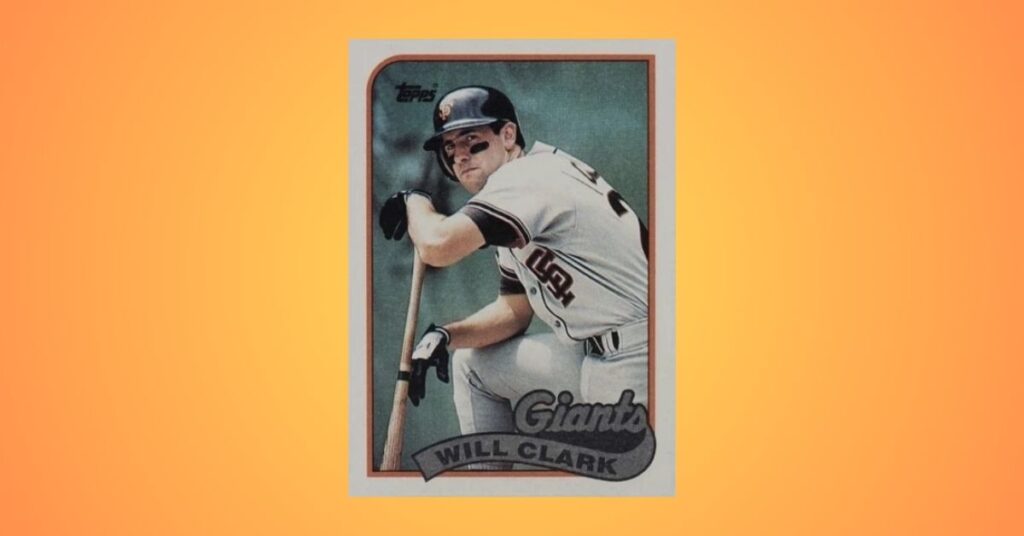
Clark’s prowess earned him a spot among baseball’s elite, finishing second in NL MVP voting while setting franchise records that still resonate today. His standout performance during the NLCS, where he claimed MVP honors with a staggering 650 average, highlighted not just his individual talent but also his ability to elevate those around him.
1989 Topps Traded #200 George Brett
| Value | $40 |
| Grade | PSA 10 |
After suffering a torn ligament in his right knee, Brett faced an uphill battle, sidelined for eight weeks but determined to return sooner than expected. His transition back to the field came with caution; as he re-acclimated from designated hitter duties to first base, it became evident that age and injury were taking their toll on one of baseball’s most celebrated hitters.
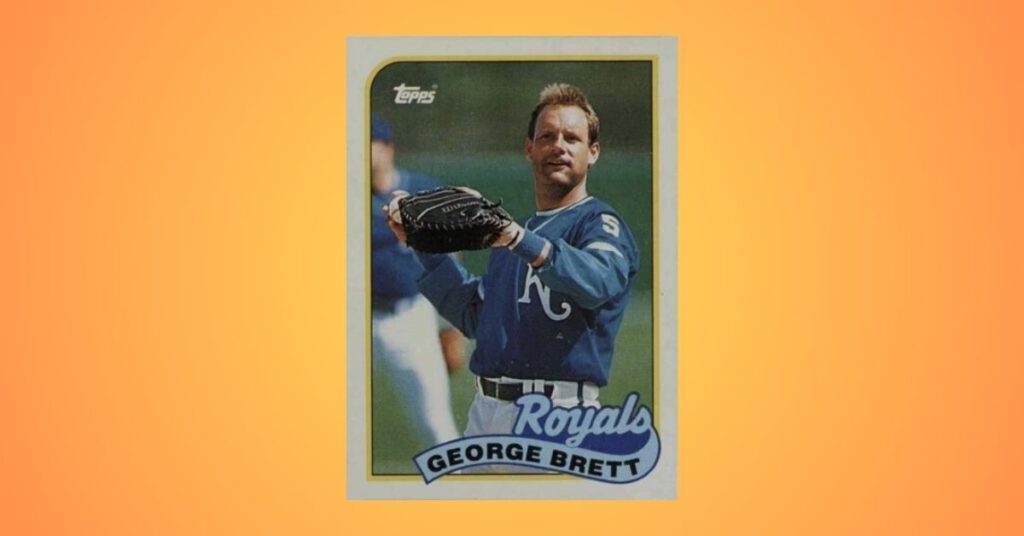
In the face of posting career lows that season—a 282 batting average and an OPS of 793—Brett’s value as a player extended beyond mere statistics. The Royals’ ability to still clinch second place in the AL West with a respectable 92-70 record showcased not only Brett’s leadership but also the impact he had on the clubhouse environment.
1989 Topps Traded #360 Ryne Sandberg
| Value | $40 |
| Grade | PSA 10 |
In the Chicago Cubs’ narrative during a transformative era. As the season unfolded, Sandberg emerged as a key figure, showcasing his resilience and talent after battles with inconsistency in previous years. With each swing of the bat reminiscent of his 1984 breakout, he mirrored the revitalization of the entire franchise that year, culminating in an unforgettable run to division champions.
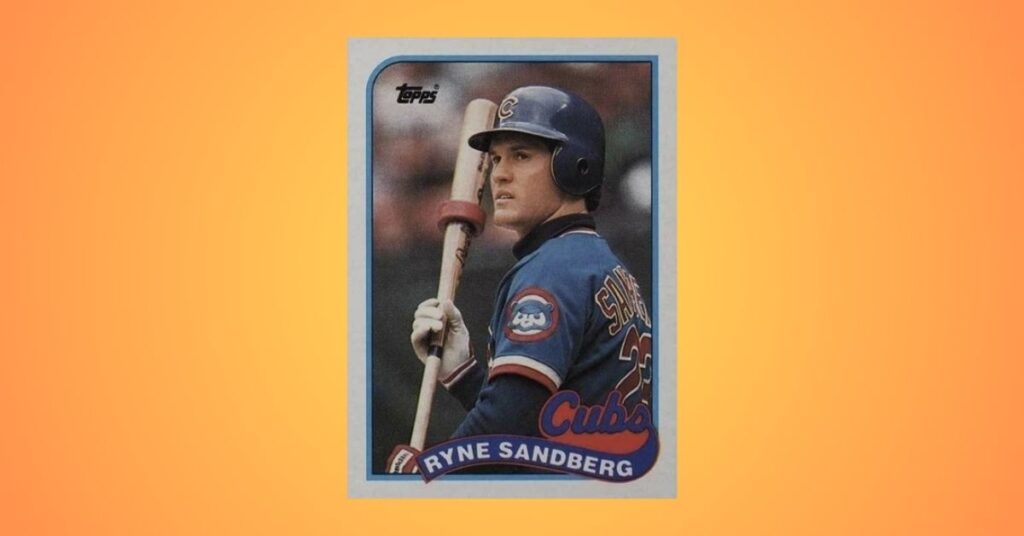
This resurgence solidified his status among baseball’s elite; thus, it’s no surprise that collectors often regard this specific card as one of the most valuable within the 1989 Topps set. With a 290 batting average and his outstanding contributions to defense with seven Gold Gloves under his belt, it becomes clear why this particular 1989 Topps baseball card holds high value among its peers.
1989 Topps Traded #505 Pete Rose
| Value | $40 |
| Grade | PSA 10 |
The Major League Baseball season represents a crucial moment not just in his career but in the broader landscape of sports integrity. The Cincinnati Reds, under Rose’s management, stumbled through a difficult season, managing only a 59-66 record by late August.
This uninspiring performance was overshadowed by serious allegations that would soon engulf both Rose and baseball: betting on games—a sin that many consider the ultimate breach of trust for anyone in the sport.
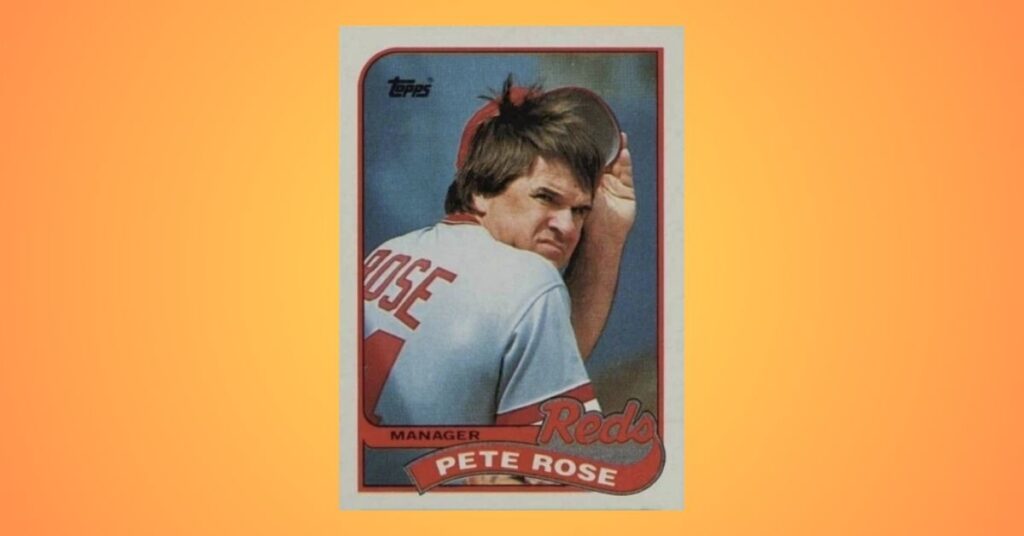
On August 23rd, after weeks of mounting pressure and investigation led by John Dowd, Pete Rose struck a deal with Commissioner Bart Giamatti that promised to reshape his legacy permanently. The findings confirmed what many feared; he had indeed gambled on Reds games while managing them.
This revelation rocked the baseball world and ultimately led to his permanent expulsion from MLB activities—a decision that still fuels debates about ethics in sports today. Over a decade later, Rose would finally confess to placing bets on his own team to win, which only added layers to an already complex narrative filled with drama and regret.
Pete Rose, a poignant reminder of both his extraordinary talent on the field and the controversy that marred his legacy off it.
1989 Topps #49 Craig Biggio Rookie Card
| Value | $35 |
| Grade | PSA 10 |
He lacked the towering home run totals that marked many of his contemporaries, Biggio carved out a legacy built on consistency and incredible athleticism. With an impressive ability to steal bases and consistently score over 100 runs year after year, he became a cornerstone for the Houston Astros during his prime in the mid-1990s through the early 2000s. Collectors understand that while this card may not headline lists of the most valuable 1989 Topps baseball cards,
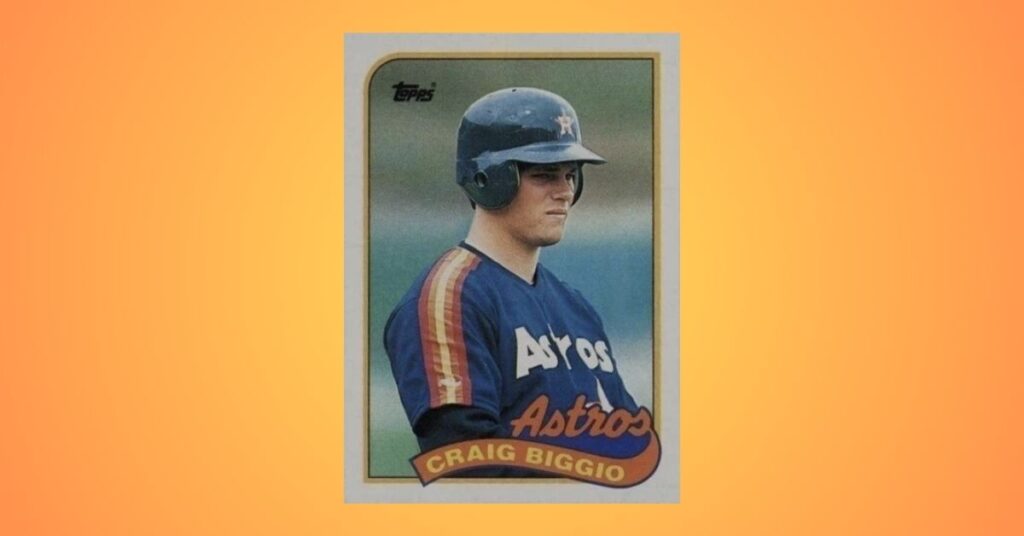
Having catapulted from just 141 minor league games to claiming a spot as Houston’s starting catcher, Biggio made an immediate impact by winning the National League Silver Slugger Award in his rookie season. This achievement marks him as not only one of the pivotal figures in Astros history but also establishes significant collector appeal for his rookie card among fans
Conclusion
Investing in classic sets like 1989 Topps can be worthwhile if you focus on well-known players’ rookie cards and maintain good knowledge of market trends in collectibles of players and significant moments in baseball history. With values fluctuating based on condition, rarity, and demand, collectors have ample opportunities to find both iconic cards and hidden gems within this set.
From rookie sensations like Ken Griffey Jr. to established stars such as Barry Bonds, these cards continue to capture the interest of enthusiasts and investors alike. Understanding the market trends and knowing which cards hold the most value can enhance any collection or investment strategy. Whether you’re a seasoned collector or just starting out, consider exploring the world of 1989 Topps baseball cards to uncover their potential worth today!
FAQs
What makes the 1989 Topps Baseball Card Valuable?
The value of 1989 Topps baseball card primarily comes from their rarity, condition, and demand among collectors, especially for key rookie cards and Hall of Famers.
Which player’s Card is considered the Most Valuable from the 1989 Topps set?
The most valuable card is typically the Ken Griffey Jr. rookie card, which has consistently fetched high prices due to his status as a baseball legend.
How does Card Grading affect a 1989 Topps Card’s Worth?
Card grading significantly impacts value; higher-grade cards (like PSA 10) are more sought after and command premium prices compared to lower grades.
